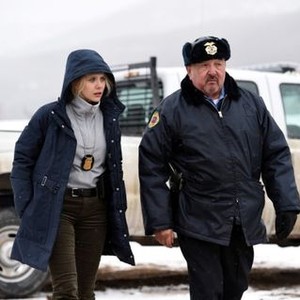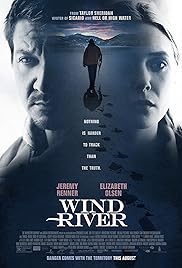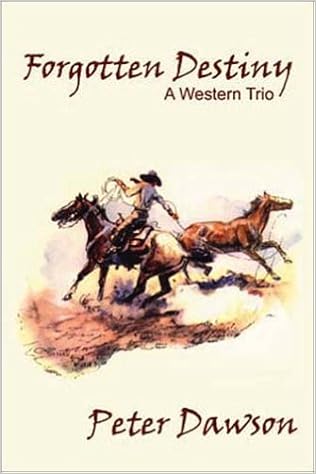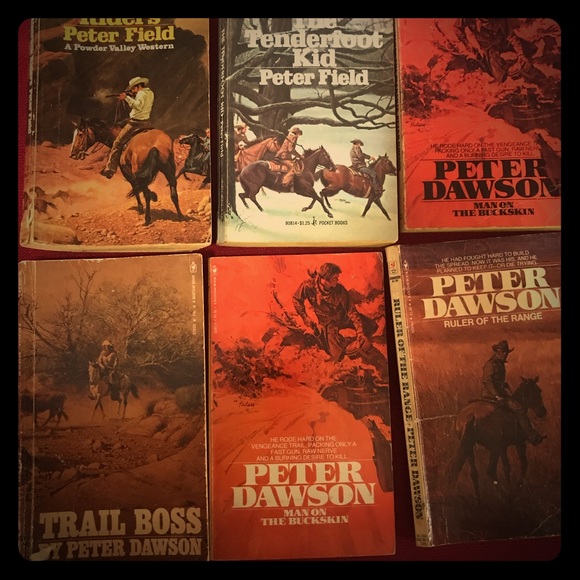
For the most part, there is a general rule I have about films: I watch them (or their trailers) before I buy them. The last thing I want is to spend money on a film only to find out it is not worth the powder to dispose of it. Sometimes, however, I end up breaking my own rule. It is usually pretty bad when I do not like said film myself, but when I buy it as a present for someone else and we both have problems with it – oh, the mortification!
To be fair, Wind River is a good movie. It’s just not great. I will take on the plot deficits first to get the negativity out of the way before I get to the positive, because there IS a positive here. It just does not make my overeager mistake any less embarassing.
With few exceptions, modern Westerns do not excite or interest me. This is because it has been obvious for years now that Hollywood no longer respects or loves the Western; they mock the genre in general. Nevertheless, whenever I hear about a new “Western” coming out, my ears prick up and I pay attention. It does not usually take more than one viewing of the film’s trailer for me to decide whether or not the “Western” in question is a movie I want to watch.
This also explains why Wind River slipped past my defenses; I never really saw the trailers for the film. I read the description for it months after it came out (took that long for someone to actually write a proper report about it), and it sounded interesting, almost like an extended episode of Longmire. That is an impressive series which I can no longer watch and so, with this in mind, I got the film for a friend as a Christmas gift.
For the most part, I would say we were impressed with it. But there were problems with the story. If you do not want any spoilers for the movie, sorry, you are getting them. Here we go:
The premise for Wind River is that an Arapaho Indian girl is found raped and frozen to death out on the Wind River Reservation by a Fish and Wildlife hunter (Jeremy Renner). This brings up bad memories for him, since his own daughter died similarly three years ago. Plus, the current dead girl was his daughter’s best friend. So we have a one-two gut punch here, and a pretty compelling one at that; so far, so good.

He alerts the Reservation police to his discovery and they call in the FBI. In their typically abstract, disinterested fashion, the Feds send in a young inexperienced agent from their Nevada office (Elizabeth Olsen) to investigate the girl’s death. Having recently transferred there from Ft. Lauderdale, Florida, Olsen’s character is far from prepared to deal with the Wyoming spring. They take her out and show her the body after getting her warm clothes. Once at the scene Renner’s character, Cory Lambert, positively identifies the dead girl (again).
Now we come to the disappointing parts of the film. One recurring difficulty in the movie was that the actors and actresses tended to speak Soto Voce. It meant we had to dial the sound up way too high for comfort to hear them, and even then they were hard to understand. Then we have the villains, identified as “oil field trash,” who are guarding a couple of nearby rigs which have been shut down.
This was a big, BIG sticking point for me and my friend. I knew of the plot point going in, and though it stuck in my craw, I was willing to watch the film anyway. My friend is more accustomed to the demonization of oil field workers than I am, so that was not mi compadre’s main difficulty with that part of the film (though it was still irritating). No, what got my amigo here was something else entirely.
During an after-film discussion, my friend explained that once oil rigs are started, they do not shut down until the rig strikes oil or gas. Only after this is it shut down and then dismantled to be moved to a different site or stored inactive for use at a future time and place. Drilling rigs are generally owned by third parties, who rent or lease them to a company or other corporate entity for the obvious purpose of drilling for and finding oil or natural gas. From the time the rigs are under contract, they cost everyone involved in running them constantly. This is whether they are moved from storage to active site, active site to active site, or from active site to storage. Lease or rent is due and payable, active or idle, by whatever entity is using the rig. Thus these rigs would not be set up, ready to go, and standing idle.
Yet in Wind River, this is exactly what is going on. There is no reason given for the rigs’ deactivation and there should be. Real rigs are run through rain, sleet, snow, or shine, in Wyoming and elsewhere. To have these two turned off on an active site for as long as the story implies is assinine because it would never happen in real life. Two idle rigs standing so close together anywhere in the world today is yet another affront to reality.
The next hitch with the story was the fact that none of the culprits scarpered after killing the dead girl’s boyfriend (guess why she was running away that night). They also all come back from town drunk on their snowmobiles. Uh, what? None of them have cars or trucks? None of them, after awakening from their drunken stupor, realize, “Oh bleep, we just killed a guy” and run for the border?
Yeah, right. One or two might have been stupid enough or mean enough to stick around and try to cover up the murder and the rape, but not the whole crew. Most people scram when they realize they have murdered someone, unintentionally or not. That did not happen in this story, and it should have.

Next we have the O.K. Corral style standoff at the oil rigs. I can actually buy Olsen’s character getting everyone killed. It is (a) a typical, by-the-book rookie/junior mistake and (b), the Feds are all about throwing their weight around. In this case, they had Olsen’s character at least being sincere, so I can forgive her character a little for this fisaco.
What is unforgiveable is that the writers did not let the Wyoming deputies (whom they showed were obviously aware of immanent danger) protect themselves. This could have been done by placing one or two of the deputies in trailing or flanking positions for the rest of the law enforcement guys in case a problem arose. These might be jaded, cynical cops who are too accustomed to “getting no help” on the Res from the Feds, but that does NOT make them stupid or unwilling to preserve their lives. This was just typical, annoying Hollywood disdain here.
Another drawback for the film was that there was not enough for the main characters to do. This story takes place over the course of two or three days, and in that timeframe barely anything happens. Even as I watched the movie all I could think was, “Yes, I get that you want to convey Lambert’s grief, and you’re doing it really well. But come on – add a little extra dialogue, some banter, or some movement, a little action – SOMETHING to help carry this scene forward instead of letting it drag like this…”
The other big catch with the movie was the rape scene. Placed as it was in the film, it was utterly superfluous to the story. If it was truly necessary, the place to use it was at the earliest possible point in the film for the purpose of emotional impact. Its location before the gunfight wastes the opportunity. It would also have been much simpler and better if the writer(s) had skipped this and used Lambert’s forced confession from the bad guy at the climax of the movie to tell us what happened. We would have gotten the gist of the rape scene just fine with that; there was no need to show us what happened.
The fact that the writer(s) wasted film on the rape scene means they were either trying to make a point about how evil oil workers are, or they wanted to make a statement about how bad it is for Indian girls on the Res. Thanks, but I did not need this scene to know it was bad. The dead body near the beginning was a pretty big clue (which even the FBI could not miss), that things are bad out there; the movie really did not need this scene.
Something else important which the writer(s) for the film neglected to mention is that Federal law ends at the borders of every Indian Reservation in the country. If an Indian commits a crime – any crime – and gets back to the Res before he is caught, then the Feds cannot go in to get him without securing the help of the Reservation police. Their assistance – real or otherwise – must be obtained before a Fed can set foot on a Reservation.They also cannot wander around the Res looking for the culprit alone.
Likewise, you can literally do anything on an Indian Reservation and get away with it. The Reservation police are the only law and order on the Res, and they are either spread too thin to cover all the territory or they look the other way, allowing people to get away with whatever they are doing – except in certain cases, I am sure.
Another flaw in Wind River is that Renner’s character, Lambert, is apparently the only Fish and Wildlife hunter for the Wind River Reservation and the territory surrounding Lander, Wyoming. It also appears that he goes to Pineville a lot while on the job, since he was there with his wife on the night his own daughter was raped and froze to death.

How could this be a problem for the movie? I did not understand it, either, until my friend pulled out a map to show me that Pineville is far too out of the way for an overnight trip, which is what was implied in the film. Thermopolis or another town closer to Lander would have been a better choice because it could have been reached within the stated timeframe.
This leads to another snag in the story: who in their right mind would leave their sixteen year old daughter home alone to babysit her five year old brother for the night? These days, misbehavior on the part of minors is encouraged. It is rare for anyone to leave their children home alone like the Lamberts supposedly did in Wind River. It would have been more sensible for the writer(s) of Wind River to have the Lamberts’ daughter be out at a party which got out of hand and ended badly, or something along those lines, than what we were told in the film.
Finally, we come to the point of intensity for the film. The climax for the movie was satisfying, but not as much as it could have been. As my friend said, Wind River could have been an update of The Searchers, showing a longer search over time and giving us more of a look at Wyoming’s scenery. (My friend would really have liked to seen Wyoming shown in all her glory through the four seasons.) The bad guy Lambert eventually does in could have been responsible not only for this girl’s death, but for the death of Lambert’s daughter as well. Taking him out would thus have been far more fulfilling for everyone involved. None of this is to say that the climax was bad. It just could have been better, like the rest of the plot for the movie.
You can see now, readers, why I feel embarrassed for getting Wind River for mi compadre without watching it first. After sifting the story a little, we are not left with much more than a carapace, a shell of what could have been. I felt more than a bit mortified after the first three or four conversations we had discussing this movie.
Still, my friend insists Wind River is a good film, and I did enjoy it. We both would have liked it more if these glaring plot holes and virtue signals had been absent or mended, but on the whole we actually came to the consensus that the film deserves three stars. Why?
For one thing, the acting by every member of the cast is superb. I do not often say this about a movie – I really do not – but the acting here was just that good. I have seen both Renner and Olsen in and out of the Avengers’ franchise, although I admit that that is where I like them best.
I have seen Renner in Mission Impossible: Ghost Protocol and in advertisements for other movies. Frankly, while I liked Ghost Protocol and thought he was good in it, his performance there did not equal his work in the MCU. In Wind River, I think he managed to up his game; if the plot had been better, I would have enjoyed his performance even more than I did.
Olsen – I saw a little of her in the Godzilla remake. Blech, I hated it – not her, the film. My revulsion for the last Godzilla movie colored my appreciation for Olsen’s acting there. Not so in Wind River. She did a very, very good job in this film. Wind River should put her on half a dozen casting call lists at least.
Graham Greene was great as the world-weary, quietly cynical, yet still friendly Reservation police chief. I hated watching him die; for a minute there, I thought he might have been spared and that the description of the film had mistakenly listed him among the dead. No such luck – dang. He was really good; too good to croak.
The rest of the cast did a great job, too, absolutely phenominal. It will not get most of them put down for casting calls, unfortunately, but the fact is they all performed well. So the acting alone lands this movie, in my opinion, two full stars. And although we did not get to see near enough of Wyoming, I liked what I did see. Chalk up another half star for that. I should probably add that the bad guy getting his just desserts gives extra weight to this half a star.
I think, personally, that the subject matter earns the second half of the third star, along with the palpable conveyance of grief and loss. Like Longmire, Wind River tackled the issues on the Res. It did not do so in the same fearless manner that the TV series did, but that is because the writer(s) for the film played by Hollywood’s rules.
Longmire did not do this, which is why it got booted to Netflix from A&E. That series stared the rampant problems on the Res in the face and made its viewers do so, too. Wind River fell short of this mark, which is sad. While it certainly showed that the Feds do not care about the Indians on the Reservations (until the next election, of course), it also made it look like the rest of the country does not care about the people on the Res, either, and that is wrong. But the fact that anyone in Hollywood was willing to come within a hair’s breadth of admitting the real troubles on the Reservations in a film is something. Maybe it will get more people to pay attention to the Res.
We can but hope. I certainly will.
So, readers, this is my opinion of Wind River. It is worth watching – but not necessarily worth buying. If you love it, flaws and all, then go ahead and buy it. I will just sit here in my corner of the Internet and continue to suffer occasional, intense bouts of buyer’s remorse.
‘Til next time. 😉


























